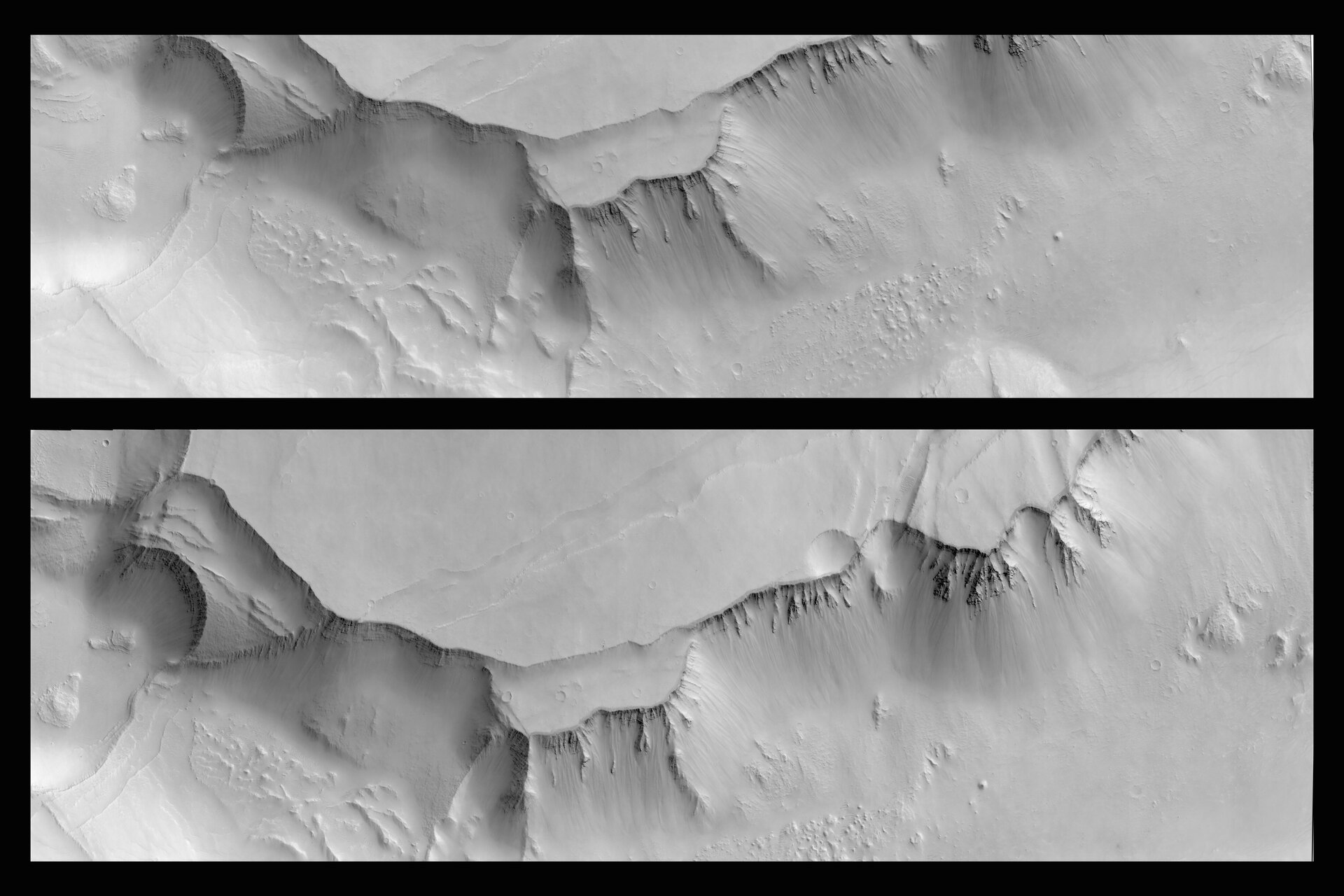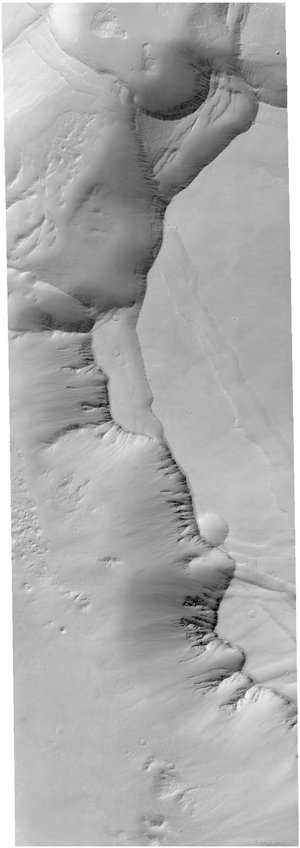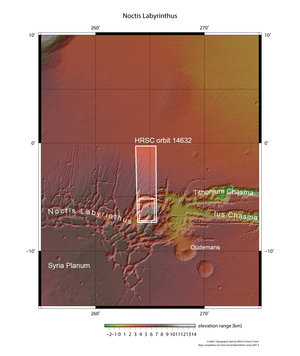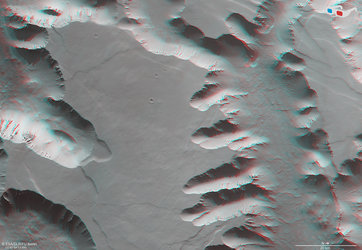

Noctis Labyrinthus stereo pair
ExoMars was launched on a Proton-M rocket from Baikonur, Kazakhstan on 14 March 2016. Around seven months later, it arrived at Mars.
As part of preparations for its main science mission to analyse the atmosphere for gases that may be related to biological or geological activity, and image sites that might be related to these sources, the Trace Gas Orbiter has conducted two campaigns to test its science instruments – one last November and one last week.
Presented here is one of the first image pairs taken by the orbiter’s high-resolution camera on 22 November.
The images together form a stereo pair of part of the Noctis Labyrinthus region of Mars. The camera takes one image looking slightly forwards (bottom image in this orientation), and then, after having flown over the area, it rotates to look ‘back’ to take the second part of the image (top), in order to see the same region of the surface from two different angles.
By combining the image pair, a 3D image can be constructed and information about the relative heights of the surface features can be seen.
The images were taken to test the timing of the images as the spacecraft moves over the surface, in order to best reconstruct the stereo images. Additional tests were conducted last week to fine-tune the process.
Noctis Labyrinthus, or ‘Labyrinth of the night’, lies on the western edge of Valles Marineris, the grand canyon of the Solar System, and comprises a vast network of flat-topped plateaus and trenches. Landslides are seen in the flanks of the steep slopes.
Since arriving, the orbiter has also conducted a number of manoeuvres to change its orbital period and inclination, ready to begin the year-long aerobraking phase later this week. This process will use the planet’s atmosphere to gradually slow the spacecraft speed and so move it into a 400 km near-circular orbit, from which the craft will conduct its main science mission.
The images were taken by the CaSSIS camera; the scale here is 7.2 m/pixel and the images correspond to an area on Mars about 15 x 45 km.





